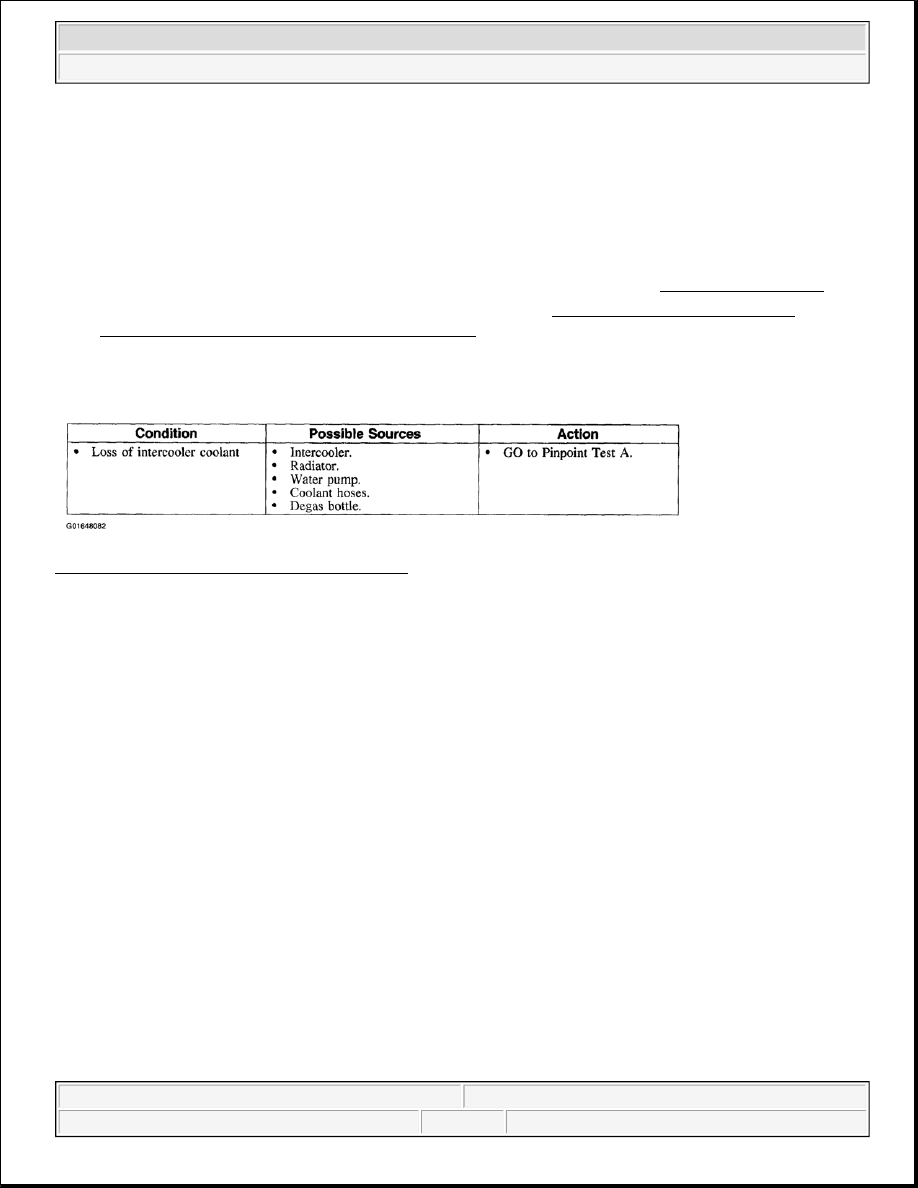Content .. 1008 1009 1010 1011 ..
Ford F150 Pickup. Instruction - part 1010

4. Check the coolant system conditions:
z
If the intercooler fluid is low, add the specified coolant mixture only.
z
If the intercooler coolant fluid tests weak, add straight engine coolant until the readings are
within acceptable levels.
z
If the engine coolant tests strong, remove some of the engine coolant and add water until
readings are within acceptable levels.
5. If the concern remains after the inspection, determine the symptom(s). GO to SYMPTOM CHART .
6. Verify the cooling system is correctly filled and bled. Refer to SUPERCHARGER COOLING
SYSTEM DRAINING, FILLING & BLEEDING .
SYMPTOM CHART
Fig. 6: Supercharger Cooling Symptom Chart
Courtesy of FORD MOTOR CO.
PINPOINT TESTS
Pinpoint Test A: Loss Of Coolant
2003 Ford Pickup F150
2003 ENGINE Supercharger Cooling - F150 Pickup